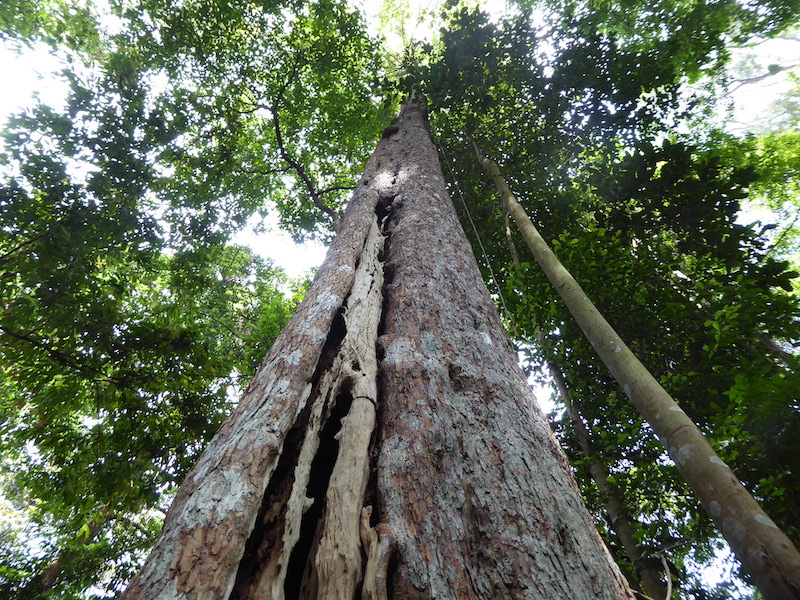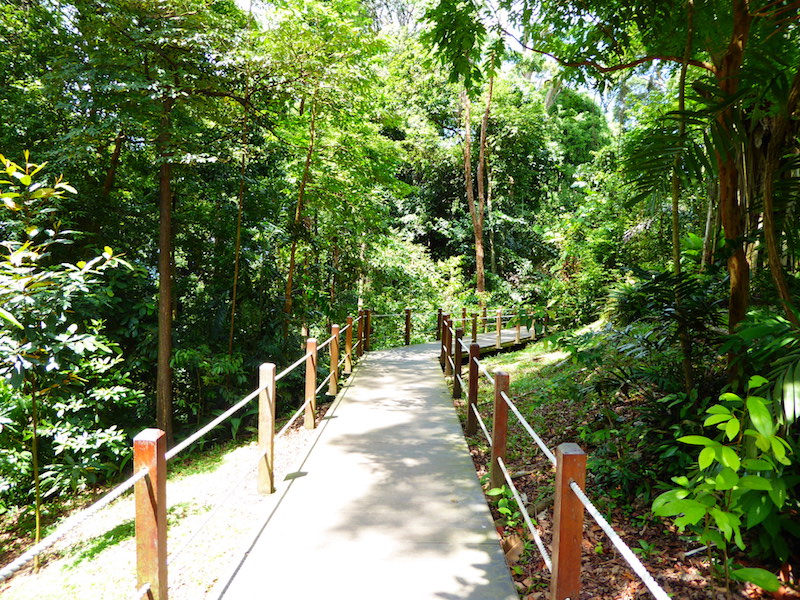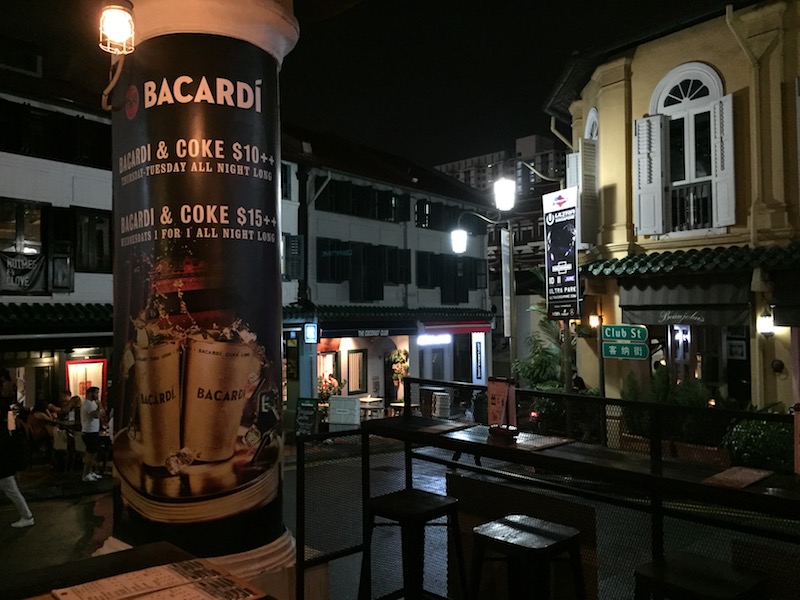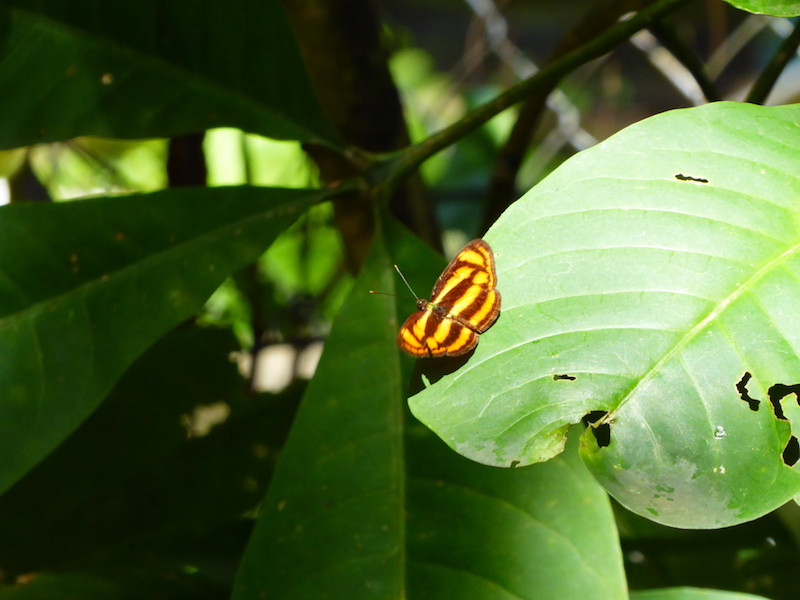There’s something ridiculous about going for a walk in a hilly Singapore nature reserve when the weather is so hot and humid. But we were never going to find out much about the country jumping from one air-conditioned building to another.
So visiting the Bukit Timah Nature Reserve stayed on our list of things to do. However, our planned trip to the island of Pulau Ubin was a casualty, despite it being home to Singapore’s last kampongs and a step back into the nation’s history. Neither of us fancied a day of cycling its footpaths with the weather being so oppressive.

After breakfast we took the metro north to the oddly named Beauty World station. Expecting a theme park for face lifters, it turned out to be a cheap and tatty shopping centre that stood next-door to the cheap and tatty Bukit Timah mall. The locals may have had a choice of shopping centres but they were both pretty awful. The big-name global chains and pricey goods of their city centre rivals were notably absent; instead the units were mainly given over to the migrant labour industry and the recruitment of maids, be they Indian, Chinese, Burmese or Filipino.
These agencies highlighted one of the reasons behind Singapore’s success – its ability to attract low-paid workers from around Asia to do the jobs that locals won’t do, or won’t do for the wages offered to migrants. The minorities make up a substantial portion of the population, and I wasn’t surprised to learn that a combination of low wages and poor treatment can lead to tensions and the occasional riot.

Not that we saw any of that at the reserve, which covers the slopes of Bukit Timah. Singapore’s highest peak stands at 163 metres and it’s dinky as far as reserves go. Formed in 1883, it has the largest area of primary rain forest left in the state, which isn’t saying much. But it’s home to numerous species including pangolins and macaques. Sadly, and to Graham’s disappointment, we never saw any. The tigers that once stalked the forest are long gone too, which is perhaps a good thing for today’s visitors.
We began our climb up the main track to the summit in the drenching heat, me clutching my new towel and seeking shade from the giant trees that soar into the sky. The sounds of the city hovered in the background, including helicopters and traffic, but they were drowned out by noisy choirs of crickets, exotic birds and the breeze stirring the foliage.

Huge lizards rummaged around in the dead leaves seeking insects on the forest floor, oblivious to our presence, while squirrels chased each other among the branches. Butterflies, both small and the size of our hands, danced between leaves and petals. Later in the visitor centre at the foot of the reserve, we discovered that the hill is also home to big spiders and pythons. Fortunately, we never saw them and I may well have changed my mind about exploring the hill if I’d known they were there before setting out.
We took the climb slowly, mopping our brows. Up at the top, giant pylons scarred the landscape and we caught sight of the lakes that had filled the old hillside quarries. There was little evidence of the Battle of Bukit Timah, which raged on the hill in February 1942 as Japan fought to drive the colonial British off the island. It didn’t take long for the Japanese forces to win control of both Bukit Timah and the rest of Singapore, despite a fierce allied counterattack.

After resting in a shelter at the summit, we walked down through the forest on the rustic Cave Path, past natural springs and the caves that gave the trail its name. These were supposedly built by the Japanese for storage during the occupation.
By the time we reached the bottom of the hill we were pretty much fit to drop in the heat. We caught the metro back to the city, had a disappointing Japanese lunch and then a scare when I’d thought I’d lost my phone. Crisis over and phone recovered from the restaurant, we finished the afternoon by the pool.
Chinatown was our destination for the evening, and we stopped for a beer on Mosque Street before finding a table nearby at the highly rated Momma Kong’s restaurant. This is supposed to offer the best chilli crab – a popular local dish – in Singapore. Now I love chilli and crab but the thought of trying to crack through shells and dig out the meat filled me with dread so I opted for the version where the hard work had been done for us. And delicious and fiery it was too, the sauce not too overpowering to drown the delicate taste of crab. Around us braver locals donned plastic bibs as they battled with their crustacea and got pasted in sauce.
Stomachs full, we walked into one of the main nightlife areas of Chinatown, Club Street and Ann Siang Road. The many bars and restaurants were busy with tourists and locals and we ended up in the rooftop bar at the Coriander Leaf Grill. In the sultry night air, we drank cold Peronis. And perspired.

